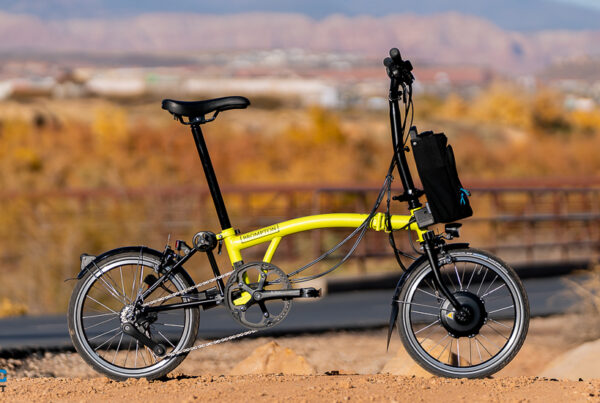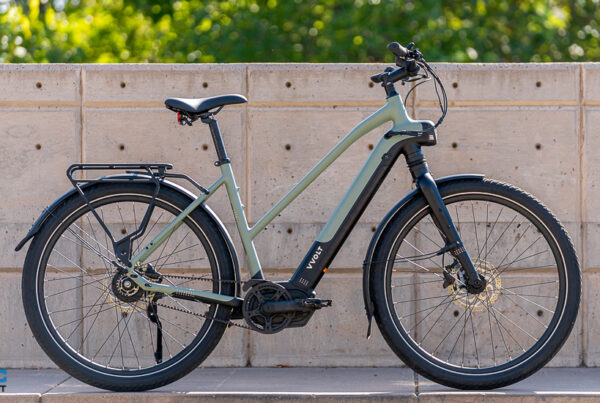Some links may be affiliate links. We may get paid if you buy something or take an action after clicking one of these.

Aside from speed, power is probably the hottest topic — and selling point — in the electric bike world.
Conventional wisdom would say that when it comes to power, more wattage is better. But if that’s the case, why do so many high-end e-bikes come with what seem like smaller motors — and is 250W enough power for an electric bike?
There’s a few factors that dictate how much wattage an e-bike needs, ranging from the type of motor being used to how the e-bike was designed. It’s also helpful to understand what manufacturers are describing when they talk about motor wattage, and how U.S. law dictates how powerful an e-bike can be. This post will dive into those details and more.

The small but mighty front hub motor on a GoCycle G4i+, arguably one of the peppiest, torquiest and most compact 500W hub motors we’ve tested.
But here’s a short answer that I’m sure will ruffle some feathers: Yes, we’ve found that 250W is often plenty powerful for many e-bikes. There’s some caveats to that statement, but by and large a 250W motor is enough to give a rider’s pedaling a nice assist. Remember, an e-bike is still a bicycle — by definition at least a little physical effort is required.
E-bike motor sizes: 250W to 750W
An e-bike motor’s power is measured in wattage, and in the U.S. motors typically range between 250W to 750W.
You can definitely find e-bikes with smaller and larger motors, but that range is what we typically see most often at Electric Bike Report. Motor sizes typically get larger or smaller in multiples of 50W — 250W, 300W, 350W, 500W and 750W are examples of motor sizes we see often.
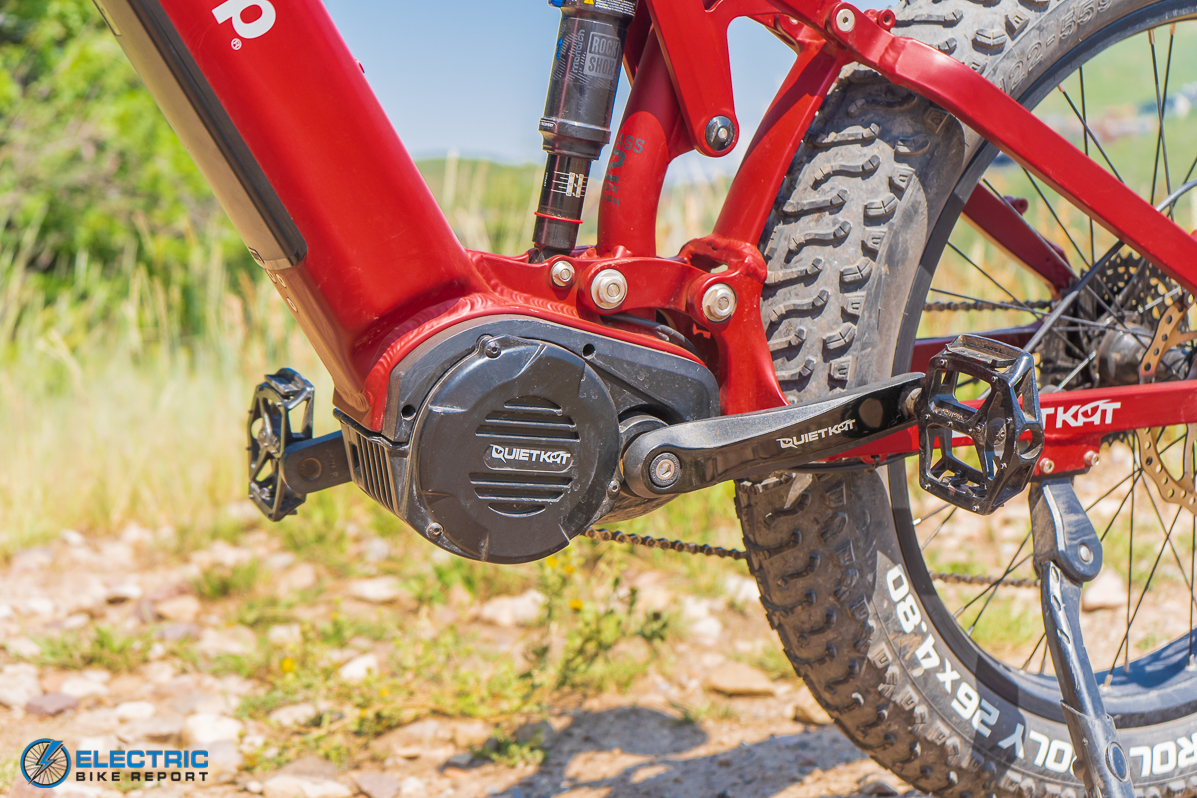
A Bafang Ultra mid-drive motor on a QuietKat JEEP all-terrain electric fat bike. One of the most powerful mid-drive motors on the market, the Ultra can produce 1,000W of nominal power, which is over the street legal limit. At that power level, this bike is designed for private land or OHV areas.
But while there’s no limit to how small you can make a motor, U.S. law does dictate how large an e-bike motor can be. In addition to having pedals and certain speed restrictions, e-bikes in the U.S. are limited to a nominal max motor output of 750W. Motors are allowed to momentarily produce more power than this, a metric called a motor’s max output, but we’ll dive deeper into the difference between a motor’s max and nominal wattage lower in the page.
Read more: Do you need a license to ride an electric bike?
It is very easy to find e-bikes that go well over the legal 750W limit, but those bikes do blur the line between electric bicycles and mopeds. In Electric Bike Report’s opinion, those bikes should be regarded, ridden and registered similarly to electric motorcycles. There are also e-bikes designed to be used on private land or OHV areas, but they do not meet the definition of a street legal e-bike.
When is 250W enough? Mid-drive vs. hub motors and nominal vs. max power
Power is all the rage right now, especially if you’re shopping for a more affordable e-bike.
But higher wattage does not always equate to a quicker e-bike. In fact, some of the most powerful feeling e-bikes I’ve tested have had 250W motors. It’s all about how that power is applied to the ground.
There are two types of motors primarily found on e-bikes: Hub drive motors that are laced into the rear or front wheel and mid-drive motors that sit between the crank arms in the bottom bracket of the frame. While e-bike motors are complex pieces of engineering that warrant a whole post just to themselves, there are some generalities we can make that will help you get the jist of the pros and cons of each.
Mid drive motors: When 250W is often enough
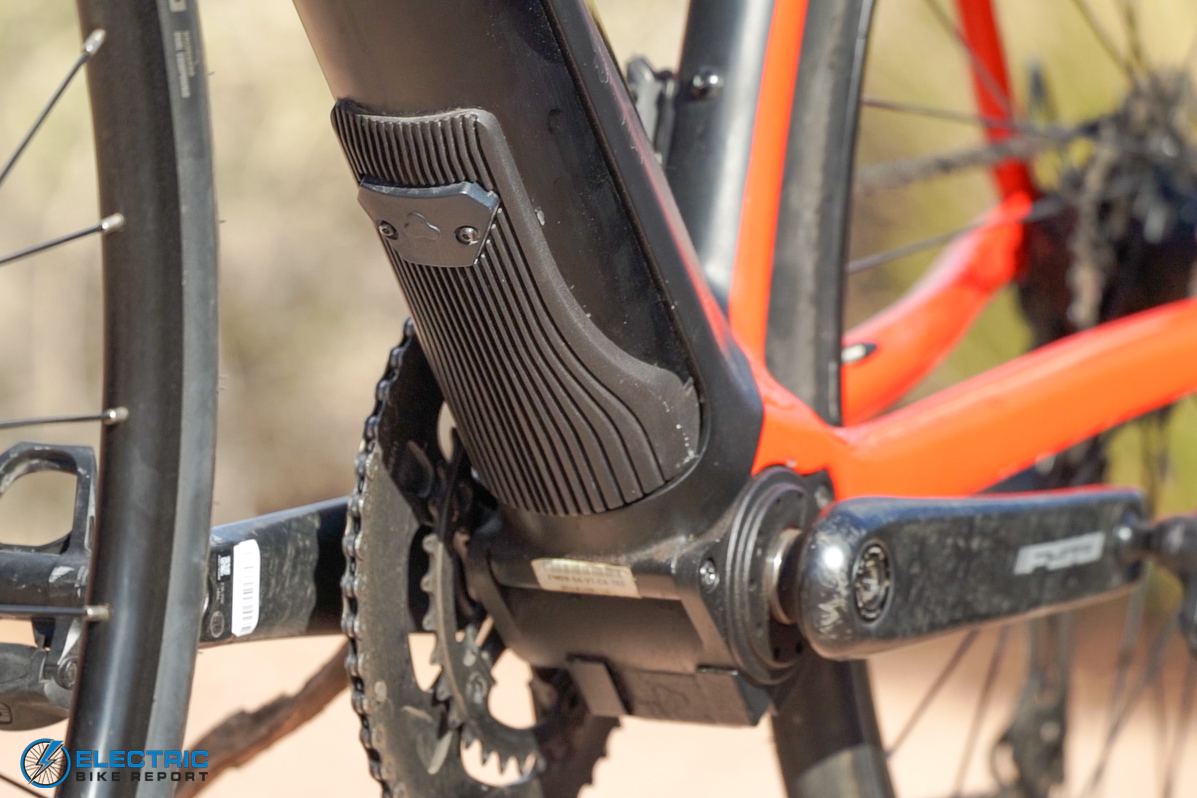
The Fazua Evation is a unique 250W mid-drive motor that’s configured as a removable drive pack containing the motor and battery. This particular example is nestled inside the downtube of a BULLS Alpine Hawk EVO electric road bike.
- Many, many mid-drive e-bike motors are nominally rated at 250W. And more often than not, these motors are powering e-bikes regarded among the most powerful and highest performance on the market. E-bike motor manufacturers on the bleeding edge of e-bike performance — namely Bosch, Brose, Shimano and more — make high performance 250W motors.
- Mid-drive motors make more power out of less wattage by leveraging the bike’s drivetrain. The bike’s performance, torque and speed will change relative to which gear you choose, making them optimal for high-performance e-bikes such as premium commuting e-bikes, e-cargo bikes, eMTBs and others.
- By using less wattage, the motors require smaller batteries and are often much lighter.
- This performance and efficiency often comes with a higher price tag. Mid-drive motors are often found on e-bikes costing more than several thousand dollars.
- Manufacturers are very good about building 250W mid-drive motors that are specially tuned for specific applications, such as high-torque motors for e-cargo bikes and high-speed motors for commuters.
Hub motors: More watts are better (most of the time)
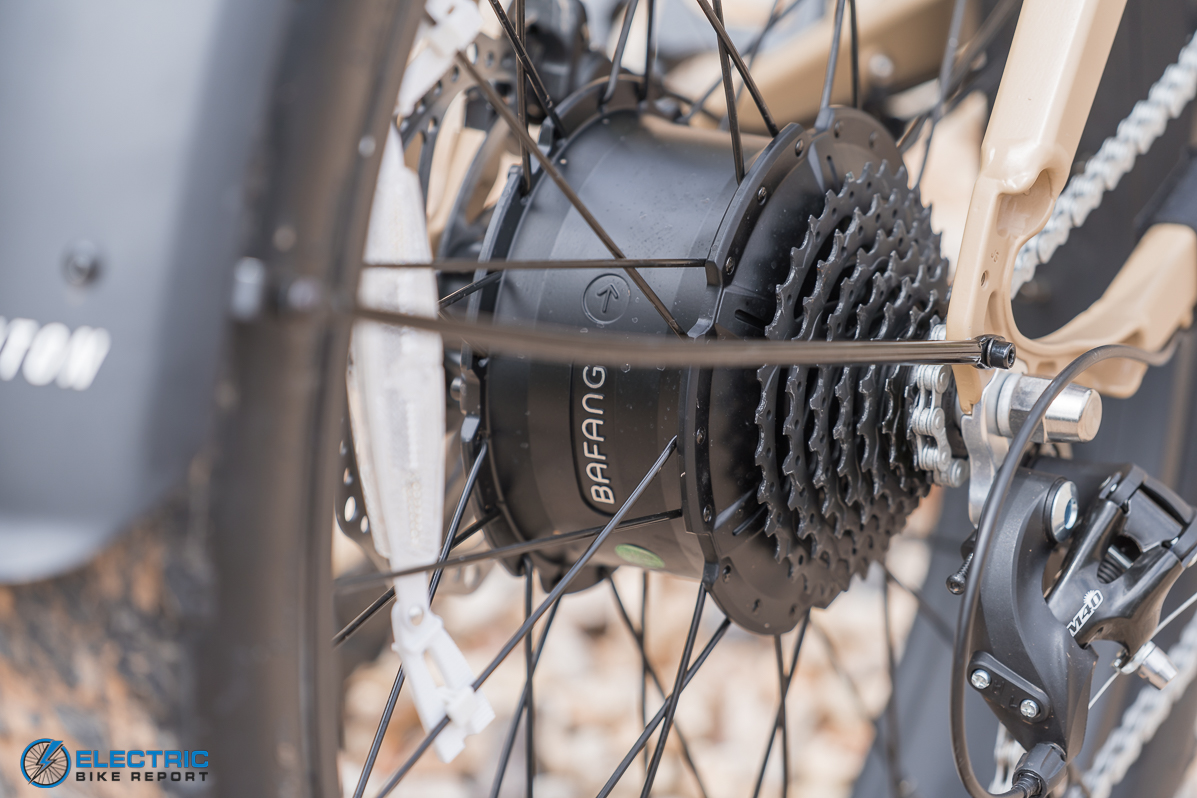
A 750W Bafang rear hub motor on an Aventon Aventure electric fat bike.
- Hub motors are where we typically see e-bikes bumping up against the 750W legal motor size. While more powerful on paper, hub motors — most often found laced into the rear wheel — do not transfer power through the gears and require much more energy to produce a similar effect as mid-drive setups. Because of the differences in how the power is applied, a 750W hub motor and 250W mid-drive are much more comparable in the real world than they’d seem on paper.
- These motors require larger batteries and usually yield a heavier bike.
- Hub motors are probably the most popular choice simply because they’re often quite a bit cheaper than mid-drives. Nearly all of the affordable e-bikes we test have hub motors. There are some exceptions to this rule — such as the ultra-premium hub-driven Stromer e-bikes and the lightweight Mahle eBikeMotion X35 hub found on many high performance e-road bikes.
- Though the rule of thumb is more watts are better for hub-driven e-bikes, we’ve ridden plenty of 250W hub drives that we really, really like. The Ride1UP Roadster V2 is an example of one such bike as is the KBO Hurricane. It all depends on the bike’s weight and how it was intended to be used. For example, 250W from a hub-driven city bike that’s lightweight and designed to be ridden in a flat area is probably plenty, whereas 750W is probably more appropriate for a hub-driven electric fat bike that weighs 70-plus lbs and is built to tackle more variable or hilly terrain.
Nominal versus max wattage
Last but not least, be sure you pay attention to whether an e-bike company is listing its “max” motor output in watts or the motor’s “nominal” output in watts, because the two metrics are very different.
A motor’s nominal wattage is the maximum amount of power it can sustain for long periods of time, while the max output is the wattage a motor is capable of for a very short burst. Nominal wattage is the more important of the two and really describes what a motor will feel like for the majority of the time you’re riding it.
Max output is still a useful rating — one that gives you an idea of how hard a bike might accelerate or how it might feel on a very steep hill — but motors are only capable of reaching their max output for just a few seconds. Anything more than that, and a motor would produce so much heat it risks permanent damage.
Sponsors
Related
Reader Interactions
![]()
Source link







